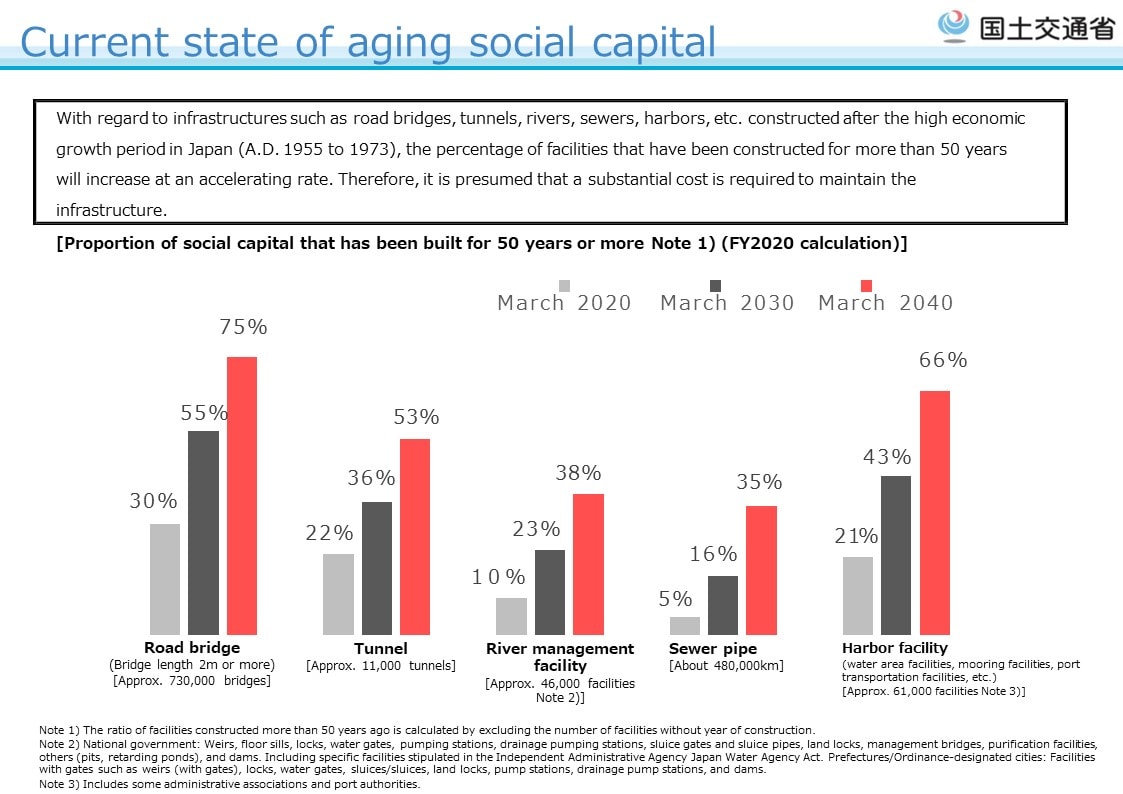




Takumi Minamino
Making Cities Sustainable
Coming Face to Face With
the Machinery That Make
Construction Possible
Autumn 2022. The future of agriculture unfolds before Takumi Minamino’s eyes.
He has begun working on his “Minamino Report” “wanting to know more because I know so little.” His first destination was Sendai. There he listened to the concerns of farmers who were hopeful for the future, but grappling with challenges confronting the modern agricultural industry. It was a day of learning about efforts to ensure sustainability from farm to table. ※ The previous article is here.
What awaits him in the field that he’s heading to?
Yanmar makes more that farm machinery. Yanmar machinery is used for construction too.
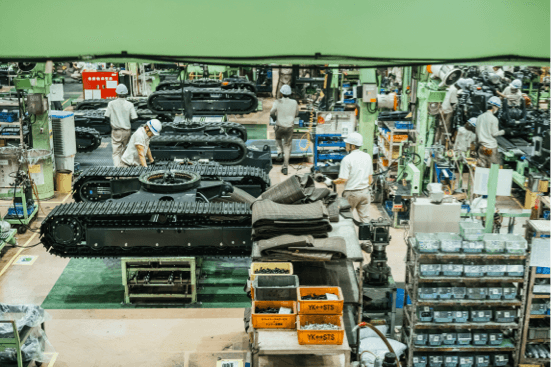
After an hour’s drive from Fukuoka Airport, Minamino arrived at Yanmar Construction Equipment Co. Ltd. (part of Yanmar Group), which manufactures construction equipment like excavators and wheel loaders.
Amazed at the size of the facility, large enough to accommodate 11 football fields, Minamino was greeted by Miho Ono from Yanmar Construction Equipment’s Sales and Marketing Department.
“Are you realizing only now that Yanmar makes construction equipment too?”
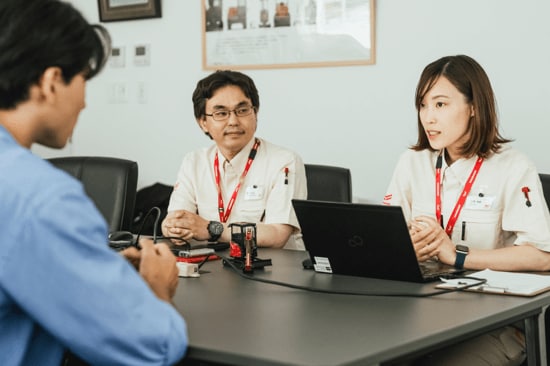

Smiling wryly, Minamino was candid:
“Actually, I didn’t know about that until I heard where I was going, probably because the Yanmar brand has a strong association with the agricultural industry. So, I’ve been really looking forward to coming here today. I was wondering what kind of construction machinery Yanmar makes. Cranes, or heavy machinery used to dig for a building foundation… So today, I’d like to know more about what kind of machinery Yanmar makes.”
The factory buildings are aligned north to south, following the order of each step of the production process. Things start with machinery doing metal stamping, welding, painting, and then assembling.
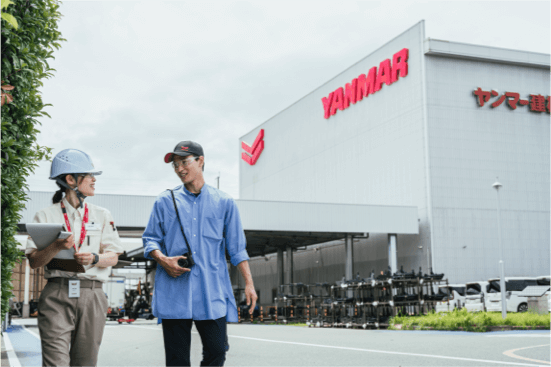
Loud noises shake every factory, but not enough to shake his curiosity. Raising his voice, Minamino asks, “What are they painting there?” “What’s the laser cutting over there?” He can barely contain his astonishment. He is like a child gazing at some monster toy truck. That Leica camera hanging from his shoulder is busier than the last time.
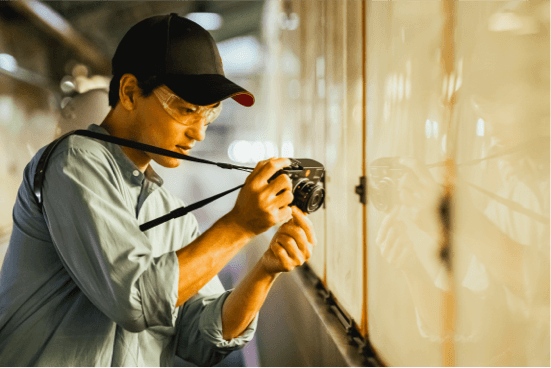
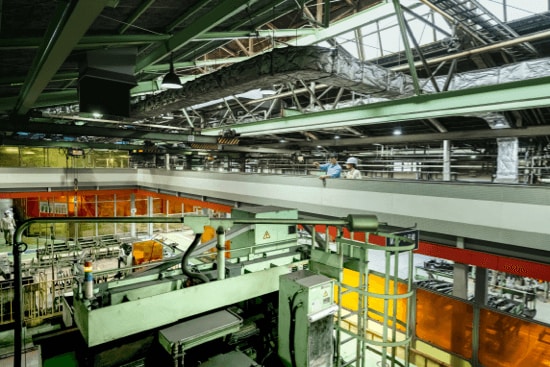
“It was exciting to visit the Agri Solution Center last year as part of my reporting, but this time it’s like, wow, I’m actually in a factory. It’s really cool. There’s large mechanical equipment making and assembling machine parts, but also people working with their hands assembling intricate mechanisms. I’m struck by the fact that so many things, whether big or small, are being made right here.”
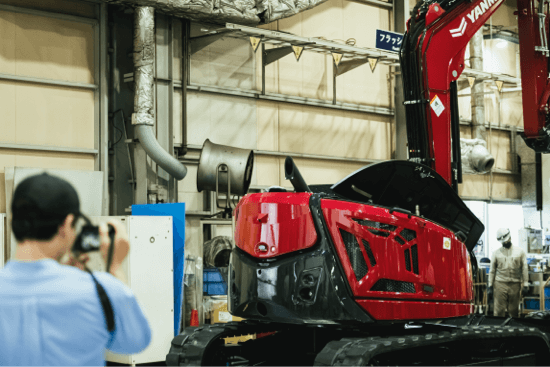
Before Yanmar started supporting the agricultural industry, it was a company that makes products that support daily life. After seeing how things are made at this site, Minamino has now come to associate Yanmar with construction machinery.
Yanmar’s construction machinery:
A history of making things compact
But Minamino still had some questions in his head. “I realize now that Yanmar also makes construction machinery. But how does that relate to a sustainable future?” Answering this question are Kazutoshi Hashimoto from the Sales and Marketing Department, and a member of the R&D Department.
“To understand the relationship between Yanmar and society at large, it helps to know the history of our company’s construction machinery.”
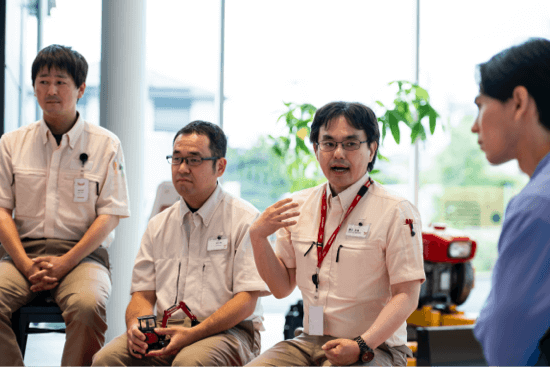
Hashimoto then projects a timeline on the monitor to summarize how the company’s construction machinery developed over the years.
“Although Yanmar Construction Equipment produces a full lineup of machinery used for construction today, it is not an exaggeration to say that our history is one of compact machines. Until the 1960s, it was common for civil engineering projects to be powered by manual labor working with tools like picks and shovels. Against this backdrop, our first-generation mini excavator was developed to reduce labor shortages and make work more efficient. That was in 1968.”
The image below can be slid horizontally.→
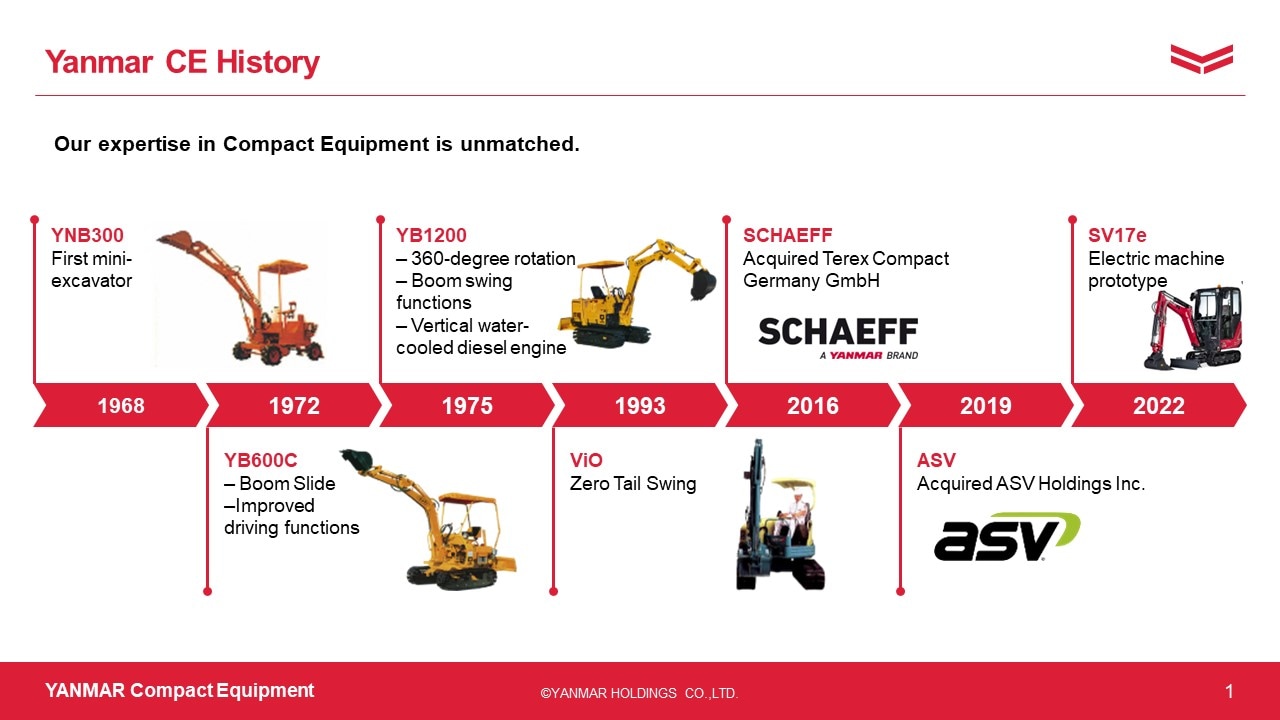
Large heavy machinery today plays a primary role in the construction of roads and bridges, and its use became common soon after the war. But large construction machinery was still not suitable for projects in cramped city spaces. For urban infrastructure maintenance, housing developments, and greening works, muscle was still a prime mover. The mini excavator offered a way out. Yanmar leveraged its expertise in farm tractors to bring a new category, compact construction machinery, into the world.
Learning that Yanmar was ”a pioneer in compact construction machinery”, Minamino asks, “Is it because the first generation of construction machinery for urban projects had four wheels, rather than continuous track plates?” His interest extends even to the design.

“That was the case at first. But as you’d expect, the tires were unstable when traversing rough ground at construction sites. So rubber crawlers, which are used in construction machinery today, were introduced in 1972. That was one of the technologies that Yanmar introduced to the world.”
According to Hashimoto, it was Yanmar that pioneered the “zero tail,” which allows the machine to rotate without its rear end jutting out. Zero tail functionality is the standard in global standard for construction machinery.
Before then, Yanmar staff members in charge of formulating that design would spend entire days at work observing operations at construction sites. One day, they noticed how the operators kept checking behind them while using construction machinery. The protruding rear of such a machine carries the hidden risk of having people caught up in it. They wanted to eliminate the protrusion, but that would be no easy task. Because construction machinery uses leverage when lifting loads, the heavier its rear end, the better. “Eliminate the rear end? That’s nonsense!” the R&D Department objected at the time. But after repeated discussions and groping about for solutions, they finally arrived at the form the machine ought to take.
“I can listen to this talk about the zero tail design all day,” chuckles Minamino. “So that was how, after much trial and error, you made the design smaller and easier to maneuver? The fact that every component exists for a purpose really appeals to the little boy in me.”
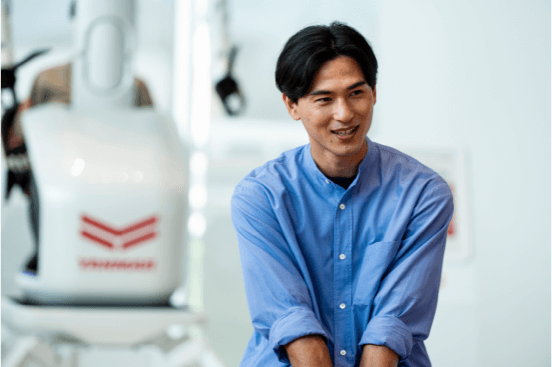
“So, just like any other guy, yeah?” Hashimoto smiles.
“Now, allow me to say a few words about the role that compact construction machinery is required to play in the future.”
Compact construction machinery is key to making cities sustainable
First, Hashimoto cites the ongoing labor shortage as one problem facing the construction industry. The number of people in the industry has shrunk due to Japan’s aging population. One solution to this problem is the use of information and communications technology (ICT) for labor savings, where computers guide machinery using 3D data throughout, from the surveying and planning to implementation and inspection.
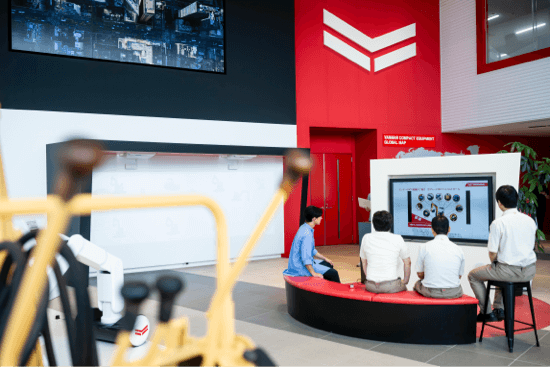
After watching a demonstration video of ICT construction equipment at work. Minamino says,
“The farm that I visited for my reporting last time also had a labor shortage, and they used technology to solve that problem. The agricultural equipment was really well designed and was so easy to operate that it seemed like even I could do it. This reminds me of that.”
Hashimoto speaks earnestly about how the construction industry must become “cool and easy to work in” in the future, and then points to a different issue.
“Here’s a graph that shows the proportion of infrastructure in Japan that was built 50 or more years ago, compared to all infrastructure of that type in the country.”
The image below can be slid horizontally.→
Hashimoto projected a graph on the screen showing data on aging infrastructure (such as roads and bridges), and how the proportion of aging infrastructure is expected to increase in the future. The graph is publicly available from Japan's Ministry of Land, Infrastructure, Transport, and Tourism. Infrastructure in Japan was primarily constructed between the immediate post-war period and the period of rapid economic growth. The fast-approaching deterioration of infrastructure has been cited as an emerging challenge. Over the next 20 years, the proportion of infrastructure that has been standing for 50 years or more will increase at an accelerating rate. Thus, there will be a growing need to maintain and redevelop it.
“Because large infrastructure like roads and bridges is already in place, construction machinery for maintaining it will become increasingly important.”

According to Hashimoto's research, football stadiums alone number 564 in Japan. Every one of them will require upkeep at some point in time.
Upon hearing Hashimoto’s explanation, Minamino’s thoughts drift to where he lives.
“Since I began living in Europe one thing I noticed is the abundance of old buildings there. You see, most places in Europe don’t experience earthquakes, so houses there have been lived in for many many years. That’s why home renovation is much greater in Europe than in Japan. Can compact construction machinery be used for that type of work?”
“Yes, indeed, it can,” Hashimoto nods. In Yanmar’s lineup of construction machinery are mini excavators that are slim enough to fit through a doorway in order to, for example, knock down an interior wall.
Compact construction machinery has a role to play even inside places where we live. According to Hashimoto, the need for such functionality has steadily grown with increasing urbanization in various parts of the globe.
“What do we need to ensure that this equipment can continue to be accepted as part of city life? Allow me to talk a little bit more about that.”
Urban functionality – more sustainable through the use of compact construction machinery. The construction industry – more sustainable thanks to ICT technology… Minamino’s conception of “sustainability” has steadily begun to expand.

